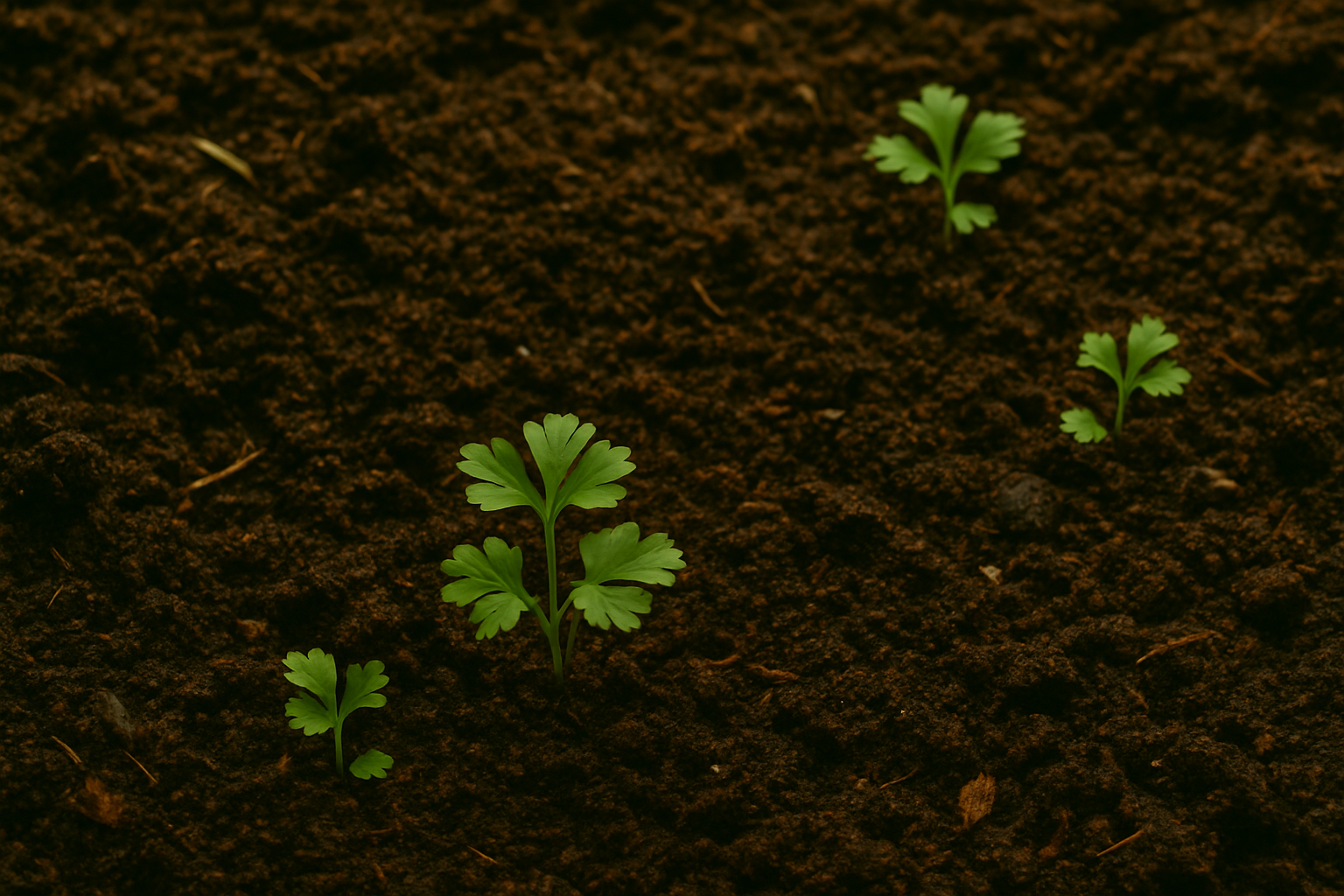Best Soil for Growing Parsley
Parsley is a versatile herb cherished in kitchens worldwide, often used to garnish dishes, flavor soups, or add a fresh touch to salads. Growing healthy, abundant parsley starts with the right soil, as this plant is particularly sensitive to its growing environment.
Soil quality directly affects parsley’s flavor, color, and its resilience against pests and diseases. For gardeners, choosing or preparing the perfect soil means understanding parsley’s needs: it thrives in rich, well-draining earth that retains moisture without becoming soggy.
Whether in garden beds or containers, aim for a loamy mix rich in organic matter like compost, which provides the steady nutrients parsley craves. Avoid heavy clay or sandy soils that either dry out too quickly or retain too much water.
Regularly amending your soil and monitoring drainage will help your parsley grow lush and flavorful, whether you’re cultivating a sunny backyard patch or a small kitchen pot.
The Ideal Soil Characteristics for Parsley
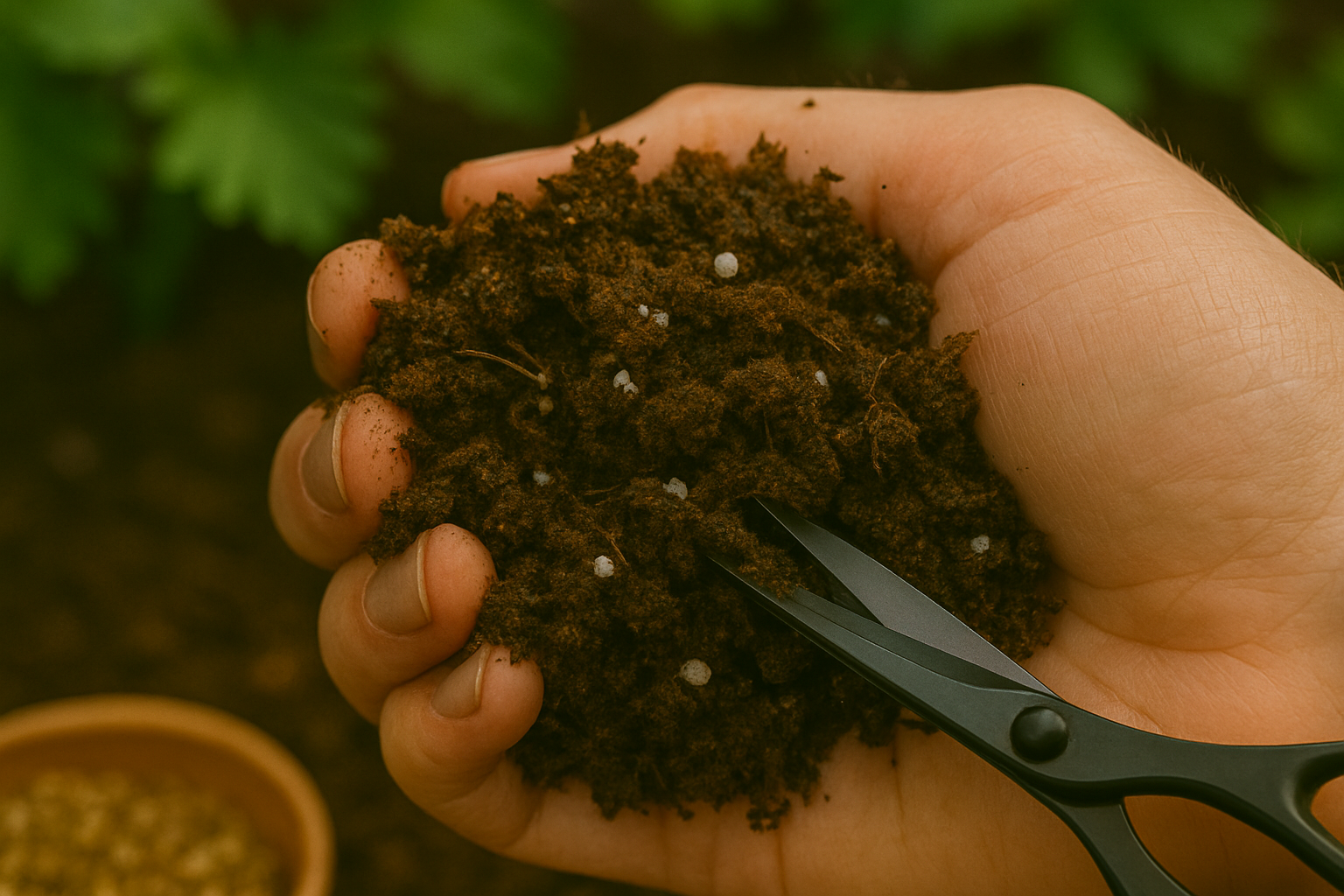
Parsley thrives best in soil that’s loamy, crumbly, and well-draining—think rich garden soil that feels soft in your hands but holds its shape when squeezed. The key is finding the right balance: the soil should retain enough moisture to keep parsley’s shallow roots happy, but it shouldn’t become waterlogged or soggy, which can quickly lead to root rot.
To create this ideal environment, focus on adding organic matter. Mixing in compost or well-rotted manure boosts both texture and nutrients, providing the right structure for airflow while helping the soil hold just enough water.
If you’re working with clay-heavy soil, amend it with plenty of compost to improve drainage. For sandy soils, organic matter helps lock in moisture and nutrients so they don’t just wash away. Each spring, top-dress your parsley patch with a fresh layer of compost to sustain fertility and keep the soil lively.
If you’re planting parsley in containers, choose a high-quality potting mix blended with a bit of compost for that nutrient boost. With the right soil, you’ll notice your parsley growing lush leaves packed with flavor—so don’t skip this step for a thriving herb garden.
Understanding Soil pH and Nutrient Requirements
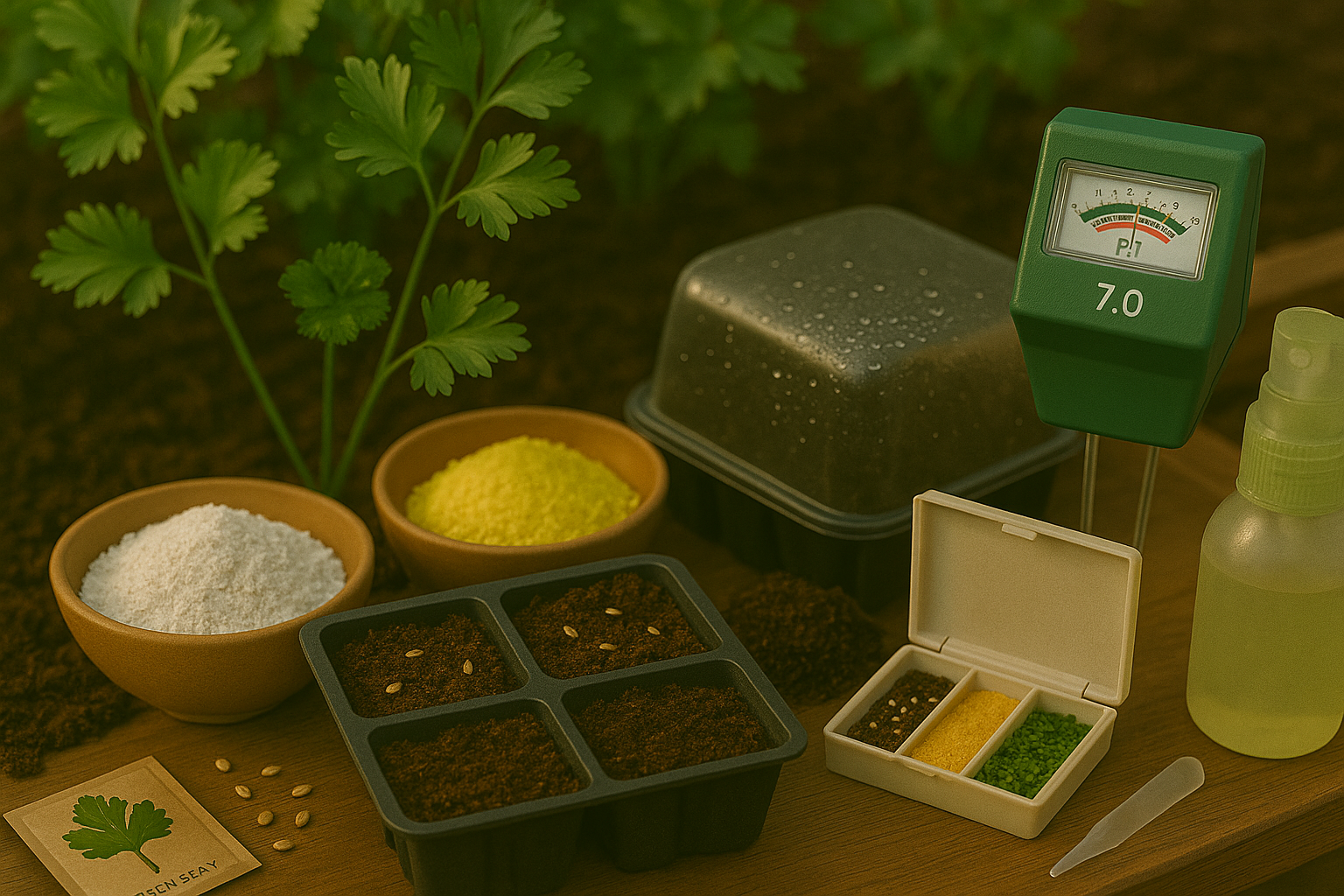
Parsley thrives best in soil with a pH between 6.0 and 7.0, which is slightly acidic to neutral. Keeping your soil’s pH within this range helps your plants absorb nutrients efficiently and stay healthy. You can test your garden’s pH using a home test kit or an affordable electronic meter, both widely available at garden centers.
If your results show that the soil is too acidic (below 6.0), sprinkle garden lime evenly across the surface and mix it in with a rake. If your soil is too alkaline (above 7.0), adding garden sulfur can gently lower the pH—just be patient, as these adjustments may take a few weeks to take effect.
When it comes to nutrients, parsley especially craves nitrogen, which supports the lush, leafy growth you want for flavorful harvests. Other essentials include phosphorus for strong roots and potassium for overall resilience. If you notice yellowing or pale leaves, stunted growth, or poor development, your parsley might be lacking these key nutrients, especially nitrogen.
Regular feeding with a balanced, all-purpose fertilizer or a dose of compost can usually correct most deficiencies and keep your parsley patch thriving.
Prepping Garden Beds and Containers for Parsley
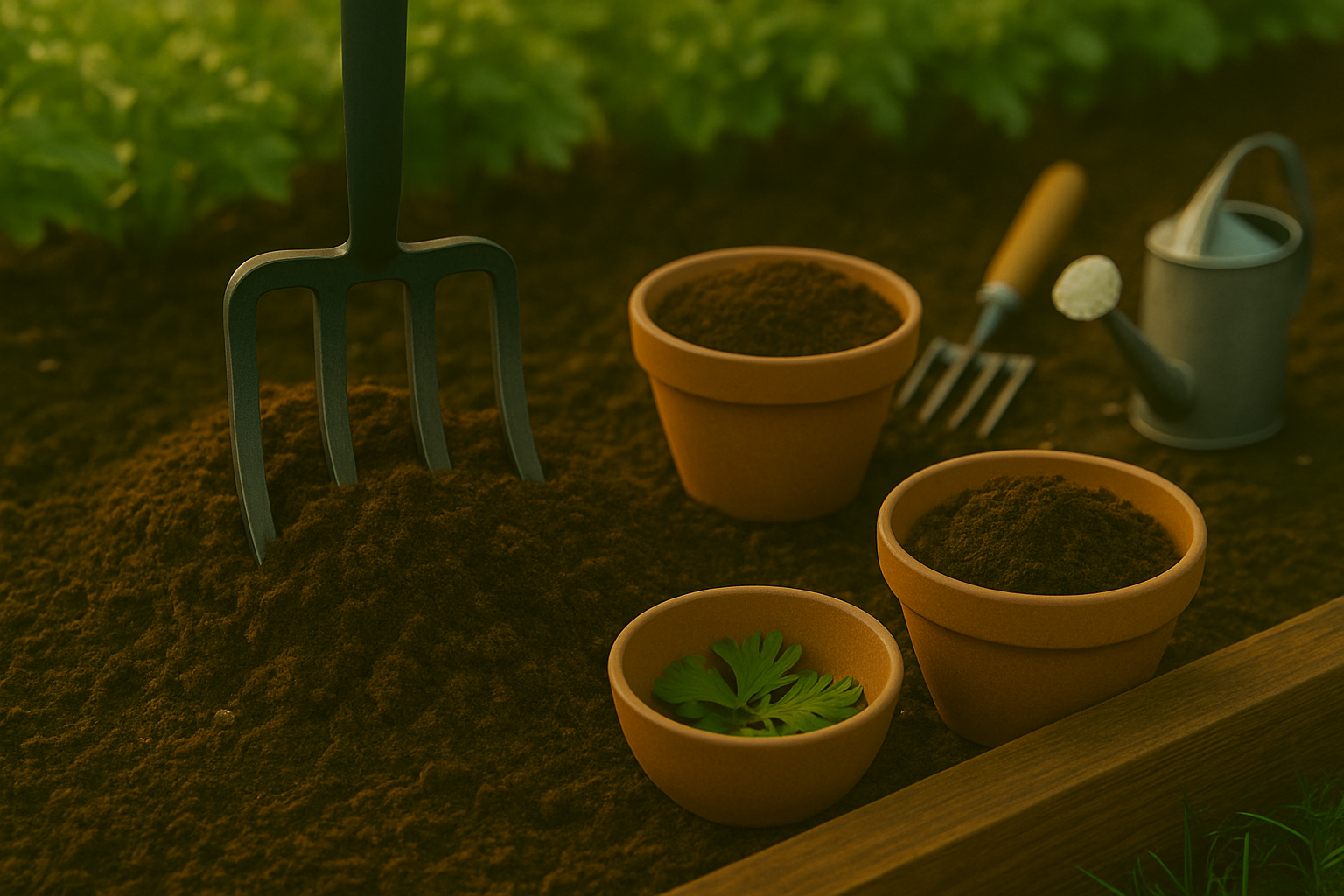
Getting your garden beds or containers ready for parsley is a quick task that can make a huge difference in your plant’s success. Start by clearing the garden bed of all weeds and debris to eliminate competition for nutrients. Use a garden fork or spade to gently loosen the top 8–10 inches of soil—parsley roots need space to spread, and compacted soil will stunt their growth.
Mix in a couple of inches of compost to boost fertility and improve drainage and moisture retention, both essential for healthy parsley. If you’re using containers, choose pots at least 8 inches deep with drainage holes at the bottom. Fill them with a high-quality, all-purpose potting mix; add some perlite or sand if the mix feels heavy.
Good drainage is non-negotiable since parsley’s roots rot easily in soggy soil. Place containers where they’ll receive 4–6 hours of sunlight. Whether in beds or pots, make sure the soil always feels airy and never packs down tightly after watering. Taking these extra steps now guarantees your parsley will thrive throughout the season, providing lush, flavorful leaves for months.
Homemade Soil Mix vs. Commercial Potting Soil
Choosing between homemade soil mixes and commercial potting soil largely depends on your gardening goals and resources. Homemade soil mixes let you control what goes in—ideal for avoiding unwanted chemicals or balancing nutrients for specific plants.
For example, a simple DIY recipe combines two parts garden loam, one part compost, and one part sand or perlite for improved drainage and fertility. This approach can save money in the long run, especially if you have access to compost and garden soil. However, mixing your own soil requires time and attention to get the proportions right and ensure no pests or diseases hitch a ride with your ingredients.
Commercial potting soils, on the other hand, are convenient and formulated for consistency, often sterilized to keep pests at bay. When shopping, always check labels for a good balance of organic matter, ingredients like peat moss, coco coir, or perlite, and avoid unnecessary chemical additives. Opt for mixes with clear organic certifications if you want to grow naturally.
“`html
Troubleshooting Common Parsley Soil Problems
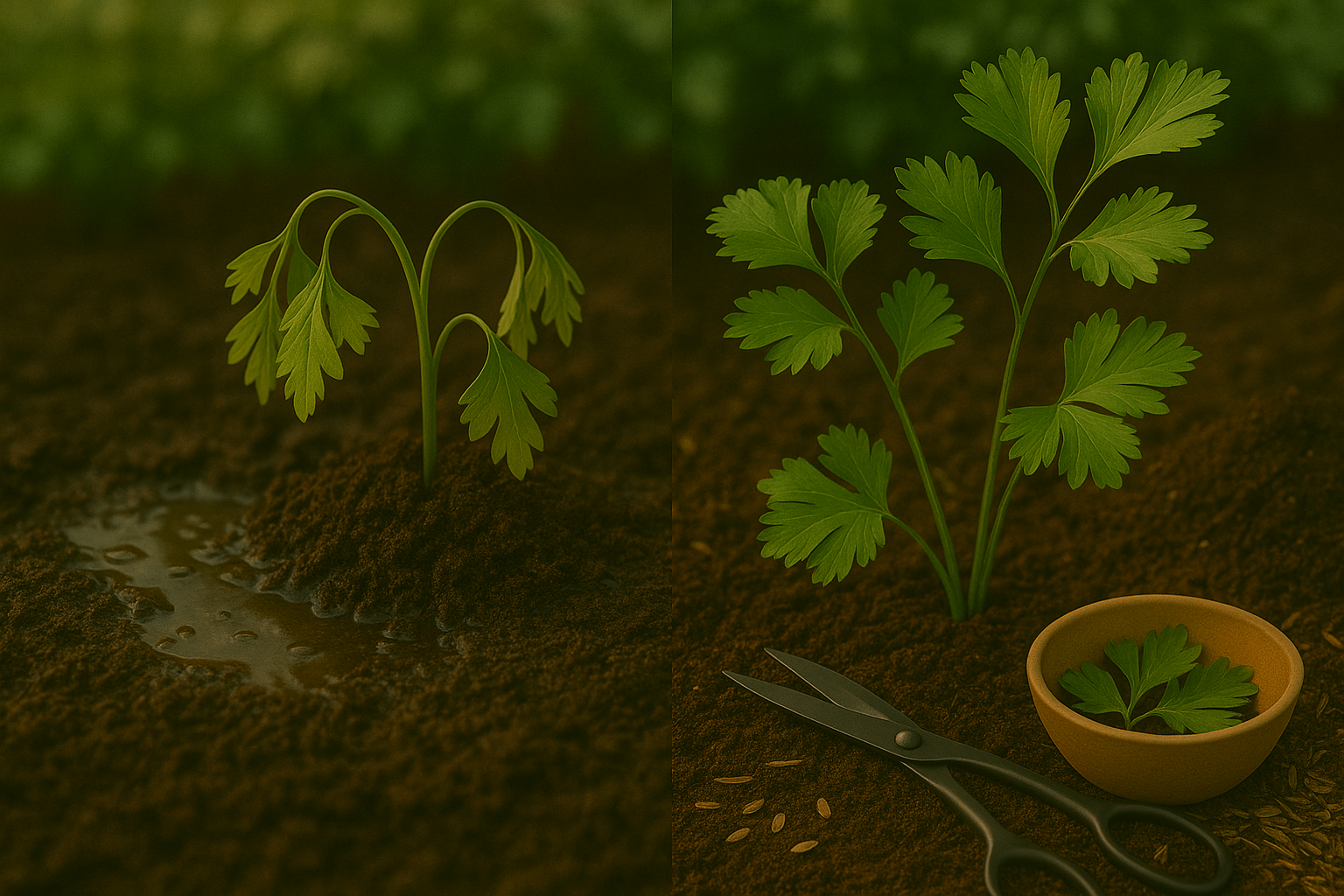
Parsley can be surprisingly picky about its soil, and common issues like compaction, sogginess, and nutrient depletion often hold back healthy growth. If your soil feels dense or water pools on the surface, it’s likely too compact, which limits root development.
You can fix this by gently loosening the soil with a fork and mixing in compost to improve structure and drainage. If sogginess is the problem, make sure your parsley isn’t planted in a low spot that collects water, and avoid overwatering—parsley prefers moist, not wet, soil.
Yellowing or stunted growth may signal nutrient depletion, so replenish the soil yearly with well-rotted manure or a balanced organic fertilizer. Test your soil’s pH, aiming for slightly acidic to neutral (6.0–7.0), and amend with lime or sulfur if needed.
To prevent diseases and pests, practice crop rotation by not planting parsley or related herbs in the same spot every year. This helps break cycles of soil-borne pathogens. Adding mulch can also deter weeds and maintain consistent moisture.
With regular attention to soil quality and proactive care, you’ll keep your parsley thriving and less susceptible to common problems.
“`
Quick Soil Tips for Thriving Parsley Plants
Healthy parsley starts with well-tended soil, so pay close attention to a few key practices. Mulch around your parsley with straw or compost to retain moisture and prevent weeds, making sure not to crowd the stems. Water the soil consistently, aiming for damp (not soggy) conditions—especially during dry spells—as parsley prefers even moisture.
Feed your plants every few weeks with a mild, balanced fertilizer or side-dress with compost to encourage lush, green growth. Regularly check your soil for compaction, dryness, or pests, and act quickly if anything seems off. Improving your soil a little each season—by adding organic matter and monitoring pH—pays off with bigger, tastier parsley harvests year after year.
